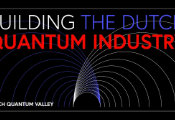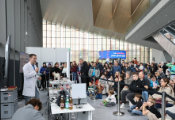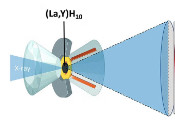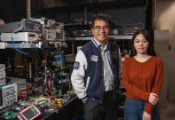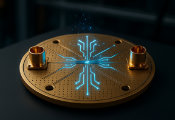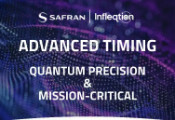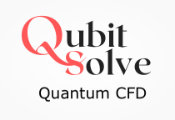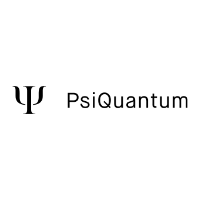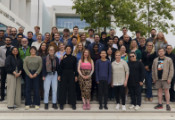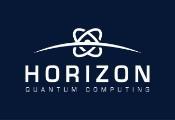Quantum Annealer Simulates False Vacuum Decay
February 04, 2025 -- The formation of the universe after the Big Bang is the subject of ongoing research. A team of scientists from Jülich Supercomputing Centre at Forschungszentrum Jülich, the University of Leeds and the Institute of Science and Technology Austria has now succeeded in gaining important insights into false vacuum decay, a process related to the formation of the universe and the behaviour of particles on the smallest scales. The calculations were carried out with a quantum annealer that is connected to a classical supercomputer at the Jülich Supercomputing Centre. Using a combination of calculations on the supercomputer and the quantum annealer, scientists were able to understand the phenomenon of false vacuum decay. The results have been published in the journal Nature Physics.
There are still many unanswered questions in the study of the universe. One of them is the decay of the "false vacuum". Almost 50 years ago, the theoretical physicist Sydney Coleman postulated that our universe might be in a metastable state - the universe appears stable, but is about to enter the so-called "true vacuum". In this case, we would currently be in a false vacuum that has residual energy and, like all physical systems, is trying to minimise its energy and reach a stable ground state.
"This phenomenon is comparable to a rollercoaster that has several valleys along its trajectory but only one ‘true’ lowest state, at ground level," explains Dr Jean-Yves Desaules from ISTA. " If that is indeed the case, quantum mechanics would allow the Universe to eventually tunnel to the lowest energy state or the ‘true’ vacuum and that process would result in a cataclysmic global event.”
The decay process would proceed as follows: At any given time, so-called "bubbles" of the real vacuum form in the background of the false vacuum and interact with each other. At some point, a much larger bubble could then form, which would spread at the speed of light and destroy everything in its path.
However, other theories assume that the false vacuum reached its ground state shortly after the Big Bang and that we are already in a true vacuum.
From idea to realisation
First author Dr Jaka Vodeb from Jülich Supercomputing Centre (JSC) at Forschungszentrum Jülich had the idea of using the advantages of a quantum annealer to simulate the decay of the false vacuum. “Quantum computers today are still very limited in their capabilities; however, I believe that certain very specific applications of already existing hardware already offer quantum advantage,” explains Jaka Vodeb. Quantum advantage refers to a situation where a quantum computer can solve a problem faster or more efficiently than any classical computer. “It is only a matter of asking the right question and using the right type of device to answer it,” he continues.
Vodeb quickly realized that his efforts would require collaboration, so he asked Professor Zlatko Papic from the University of Leeds and Dr Jean-Yves Desaules from ISTA for support. Papic and Desaules brought expertise in theoretical quantum physics and numerical emulation, complementing Vodeb’s work on the quantum annealer.
"We are trying to develop systems where we can carry out simple experiments to study these sorts of things. The time scales for these processes happening in the universe are huge, but using the annealer allows us to observe them in real time, so we can actually see what's happening.," says Professor Zlatko Papic from the University of Leeds. " This exciting work, which merges cutting-edge quantum simulation with deep theoretical physics, shows how close we are to solving some of the universe’s biggest mysteries."
Wide range of applications
The quantum annealer was used to solve a quantum mechanical many-body system. Such a system describes the properties of many interacting particles. Unlike classical computers, which struggle to simulate such processes due to the exponential growth of variables in many-body quantum systems, quantum annealers naturally model these phenomena through their qubit-based architecture. The true vacuum bubbles, which spread throughout the system and interact with each other, are naturally represented on the annealer as a group of qubits with the same value (for example, 0) compared to the false vacuum bubbles (for example, 1). However, the qubits were typically never in a pure 0 or 1 state, but in a superposition state that tended towards 0 or 1, depending on the nature of the bubble.
The researchers were able to create a metastable false vacuum state and observe the processes taking place in a precise and controlled manner. “Combining my results from the annealer and their expertise, we were able to completely understand how the bubbles of the true vacuum form and how they interact,” Vodeb explains. “This study represents a new step forward in understanding such complex dynamics and showcases the power of combining specialized quantum hardware with interdisciplinary expertise.”
In addition to its significance for cosmology, the study also has implications for further developments in quantum computing. The results are groundbreaking for future technologies that could fundamentally change areas such as cryptography, materials research and energy-saving computing.

